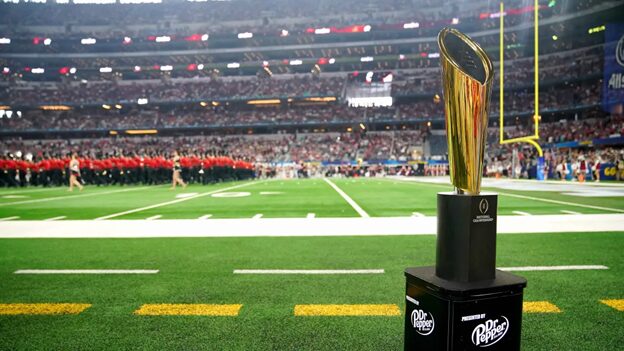
|
Winston Churchill once said that “those who fail to learn from history are doomed to repeat it”. This was also reiterated in the words of George Santayana who explained that “those who cannot remember the past are condemned to repeat it”.
Speaking of what has happened before; NCAAF Championship seasons have treated us to amazing spectacles. This includes underdogs doing the unimaginable. Although the Ohio State Buckeyes are the team to be reckoned with as of now, they did not always have this pedigree. They did emerge as national champions in the year 2002 as underdogs.
Well, the belief is that it can happen again. To this end, a few reasons why no underdog team should be ruled out of the running will be discussed. So, read on to find out more.
Underdog Teams: Why they can defy the Odds in Any NCAAF Season
From the Buckeyes in 2002 to the Tigers in 2016, the NCAAF Championship has proven that underdogs should never be ruled out. This is regardless of how slim the chances are.
Bookkeepers and enthusiastic fans who place bets are also advised to take this into serious consideration. Some of the reasons for this stance include the following:
1. Less Pressure
Being the top dog comes at a cost. For starters, there are immense expectations. For example, such teams are not only evaluated by their wins but how convincing the victories are.
So, there is just so much to play for. This can be mentally draining, eventually leading to the loss of a game with an underdog team that has very little or no pressure at all.
2. Team Chemistry
Individual brilliance is crucial for teams in this championship and this is where many top dogs outdo underdogs. However, winning games takes more than just individual brilliance.
It is also about team chemistry and resilience. Many low-rated teams understand that very little or nothing can be done when it comes to competing in the area of individual brilliance.
As a result, they put so much effort into building team chemistry and resilience, on and off the pitch. It is more like a David-versus-Goliath narrative.
The determination formed as a result is something that top-rated teams had better not take for granted. For example, this was how the Ohio State Buckeyes were able to get one past the Miami Hurricanes to win the National Championships in 2002.
This is despite facing an opposition that was on a lengthy winning streak. You can click here to watch how the team spiritedness and resilience of the Buckeyes helped them get one past the Miami Hurricanes.
3. Unpredictability
The low or no-pressure advantage that they have could result in underdog teams being very experimental. As a result, it can be hard or even impossible for top-rated teams to figure them out.
While this does not always lead to a loss for the underdogs, it could at least mean not having a smooth sail for their opponent. However, the quality of the coaching setup is also a factor in this.
4. Injury Impact
A lot of top-rated teams rely more on individual brilliance than team chemistry as pointed out earlier. They are more affected by injuries to some of their players, as a result of this.
Underdog teams are also affected by player injuries. However, it is usually not as much as it is with top-rated teams. This is to say that the playing field between top-rated and underdog teams can be leveled by injuries to top players of top-rated sides.
5. Motivation
There is a difference between having little or nothing to lose and having little or nothing to prove. The fact that underdogs are usually under little or no pressure has been stressed and this talks about pressure.
However, they have something to prove. It is that they deserve or are ready to be in the conversation when talking about promising teams and even players. This usually motivates them and can be a reason they get one over top-rated sides.
6. Support
Do you know that underdogs are more likely to gain more support? Yes, they are and there are several reasons for this, many of which are rooted in social and psychological theories.
The conscious and subconscious desire for fairness is one of them. You can imagine this narrative that helps drive home this point.
Imagine that a 27-year-old man in his youthful prime has a boxing contest against an 11-year-old teenager. You are most likely to support the 11-year-old because of your conscious and even subconscious desire for fairness.
This is also because the narrative that an 11-year-old boy was victorious against a 27-year-old man is more thrilling. By the way, the support will come even if the same supporters are not willing to bet on the underdog. For more reasons why underdogs are more likely to get more support, you can visit: https://www.tlnt.com/.
Conclusion

|
The NCAAF Championship has taught us that underdogs should never be ruled out of the running. That is one of the thrills that the competition has offered over again. So, bear this in mind even as you anticipate the NCAAF Championship season.







